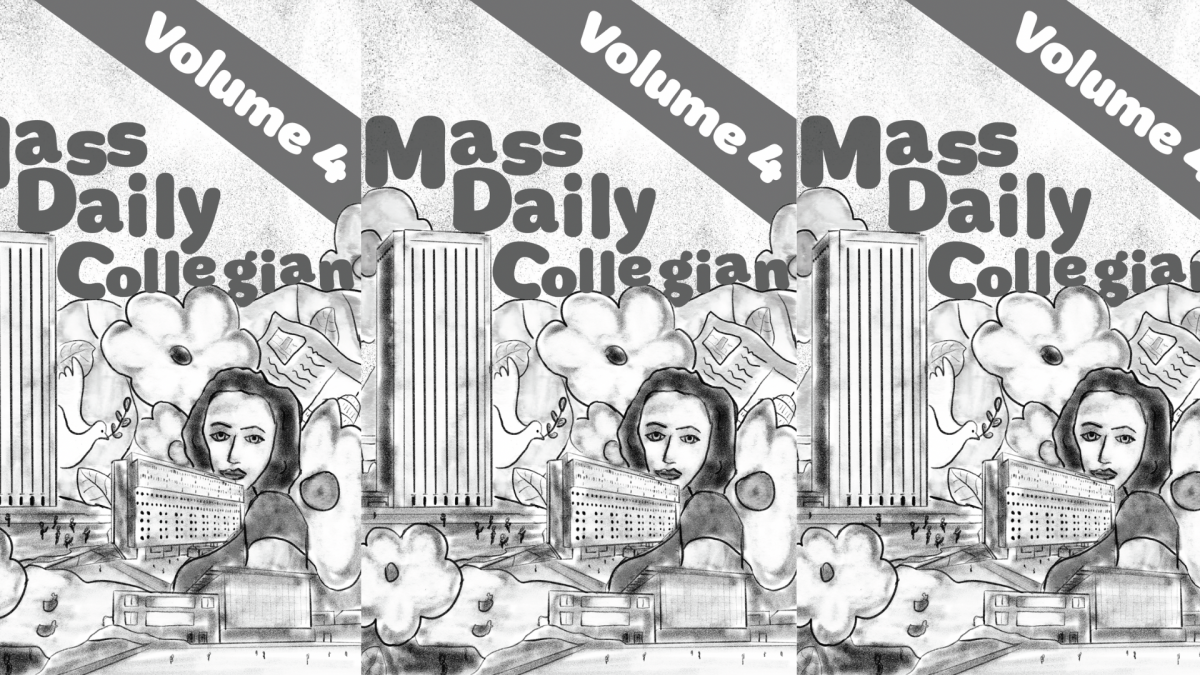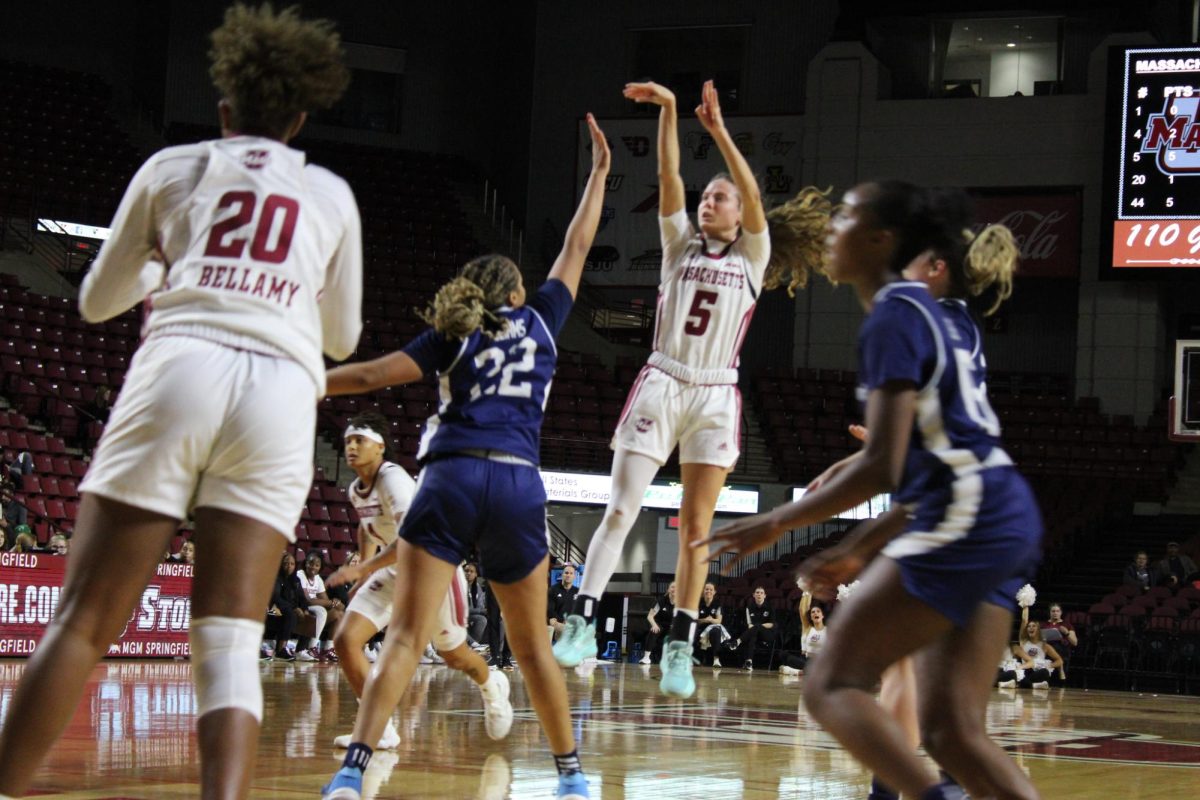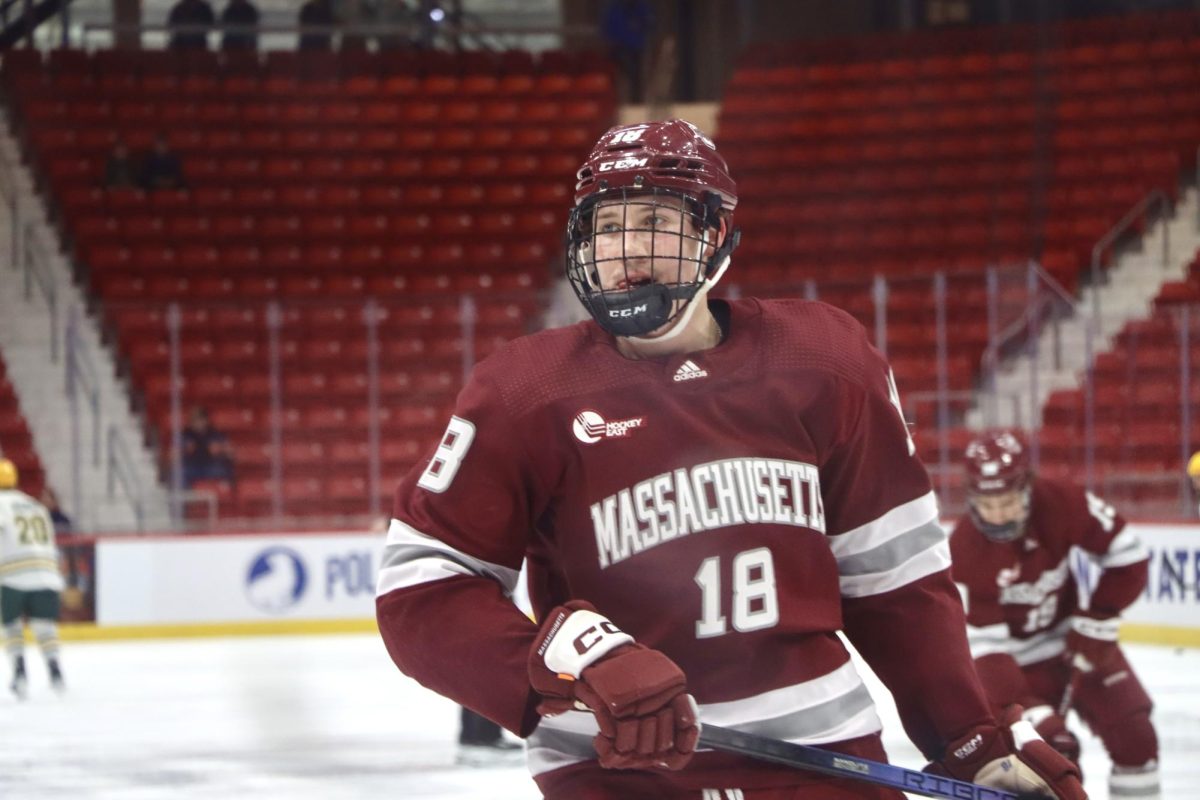When walking around campus, people don’t tend to notice how the various buildings may interact with nature within the space. I never thought about it until I realized how problematic building structures’ designs can be towards wildlife.
One day while walking to an early morning class in the Isenberg School of Management, I noticed a small yellow glob flopped onto the pathway. I assumed at first that it was trash and went to pick it up, but got a better look and realized it was a bird –– unresponsive and not breathing.
I was immediately upset, wondering how the bird could have suddenly died, before I noticed its proximity to the glass exterior of the modern Isenberg building. I realized the bird had probably flown into the window during the night or early morning, fallen and died. The bird had died by no fault of its own, simply because it could not see the glass.
The design of glass buildings like the Isenberg Innovation Hub are harmful to bird ecosystems and represent a fault within our approach to building design. The design of campuses, buildings and cities have many key interactions with the wildlife in the area, but architects and planners do not pay much mind to the creatures that inhabit the region. Architects and building planners need to be more thoughtful about how their buildings interact with ecosystems.
According to the American Bird Conservancy, glass building collisions kill between 365 million and 1 billion birds annually in the U.S. Of these near billion deaths, one to three story tall buildings like Isenberg account for 44 percent, or 253 million bird deaths. The statistics present troubling numbers that imply the dead bird I saw is a common site among places with glass buildings.
The reason birds tend to collide with glass is because they perceive reflected images as literal objects. This means glass reflections that display images of shelter, food or an escape route are seen as real by birds, leading to the deadly collisions. Crashes into glass are errors birds cannot avoid or escape because there is not an understanding of glass ingrained in their brain. It creates a tragic pattern of the danger humans cause towards nature, resulting in staggering levels of death in an entire species.
The injuries birds face from their accidental collisions do not always result in instant death. On rare occasions, birds are thankfully only stunned, but injuries tend to be more serious and endanger them to predators or the elements. Birds tend to suffer internal hemorrhages, concussions or damage to their bills, wings, eyes or skulls that hamper their quality of life or create a slow death. Their injuries and deaths are avoidable, putting the responsibility on building planners and architects to implement more ecological elements to structures.
The University of Massachusetts Amherst boasts about many beautifully designed glass buildings like the Isenberg Innovation Hub, the John W. Oliver Design Building, South College, the Integrated Sciences Building and Life Science Laboratory.
While these are beautiful buildings to study and work in, I believe UMass has a responsibility to take wildlife into consideration when planning and designing campus. Western Massachusetts has nearly 200 different bird species, making the Amherst area a critical zone for pro-fowl implementations.
There are many certified guides available that offer methods of designing buildings to make them bird-friendly. None of these design features take away from the aesthetic and functionality of buildings, and instead add visual cues that clue birds to the fact they are nearing a solid object. These options vary in style, and many are easy to install at a low cost, allowing inhabitants to enjoy the positives of large glass windows without ending the life of some poor bird.
With the dire consequences associated with glass structures and the easy solutions available, there is no reason building planners and architects shouldn’t consider including features that interact with the natural environment better. Wildlife is important to the ecosystems we live in, and while the subject I briefed in this article is only on one specific species, it still reaches the broader concerns of there being a deeper consideration for the environment in architecture.
Change needs to happen to protect our environment, and architects and building planners need to be more thoughtful about how their buildings interact with ecosystems.
Lily Fitzgerald can be reached at [email protected]




















Dr. Ed • Oct 13, 2023 at 2:03 pm
A silhouette of a predator bird, i.e. hawk, tends to work wonders when taped to the window. This is something that a concerned student could do herself — research the image, cut a few out of construction paper, and get permission to tape them up.
.
For all the reasons the author stated, the bird won’t know this is a piece of paper — it will be interpreted as a predatory bird in flight, and something to be avoided.
Jairus • Oct 13, 2023 at 1:59 pm
Great piece. Thank you. See if your campus will adopt bird-friendly treatment such as with Feather Friendly. Makes all the difference.